If you haven’t heard, we share a border with Mexico. And we patrol it. And the Washington Post published a graphic looking at the patrolling of the US–Mexican border.

Credit for the piece goes to Anup Kaphle and Bill Webster.
If you haven’t heard, we share a border with Mexico. And we patrol it. And the Washington Post published a graphic looking at the patrolling of the US–Mexican border.

Credit for the piece goes to Anup Kaphle and Bill Webster.
Mexico has some serious problems. Primarily with the drug cartels. About two weeks ago the National Post created an infographic that looked at the northern spread of Mexican drugs into the United States. The infographic also included details on the transit and transportation networks the different drugs take along with the geographic spread of the various cartels from the Tijuana, Federation, Juarez, and Gulf Cartels as reported by US cities.
Foreign Policy magazine rates countries as to how close they may or may not be to becoming failed states. Mexico is among those that have fallen into the “Warning” category over the recent years. The second half of the infographic looks at why. In short, in the past few years over 50,000 people have been killed in drug-related homicides and several more thousand have simply disappeared. The police, military, civilian officials, journalists, &c. have become targets of the cartel if they oppose the cartels.
Mexico has some serious problems. Sadly problems have a tendency to spill over borders.

Credit for the piece goes to Jonathan Rivait and Richard Johnson.
Last summer an earthquake rattled the East Coast; I felt it while lounging on the beach at the Jersey shore when I was on holiday. But Washington got hit pretty hard. The Washington Monument lost some stones. I just lost an iced tea that spilled. But, the Monument is now going to be closed until perhaps 2014 for repairs. This infographic from the Washington Post details where the damage is found on the Monument and how the slabs will be repaired.
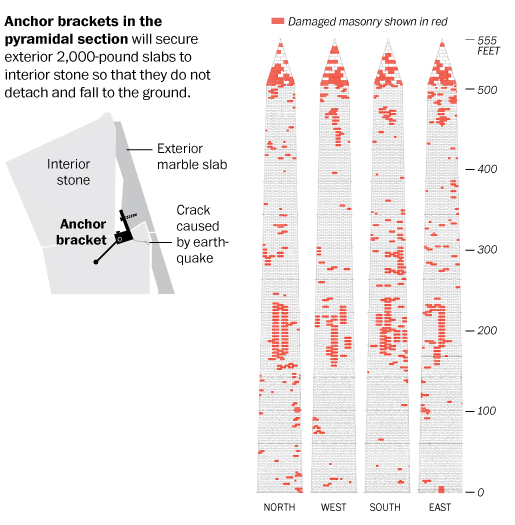
Credit for the piece goes to Cristina Rivero.
From XKCD comes an informative infographic about your central visual field. As always, it’s quite informative. It’s not quite light hearted for Friday, but you’ll probably get an odd look or a laugh when you move your face really close to your monitor…
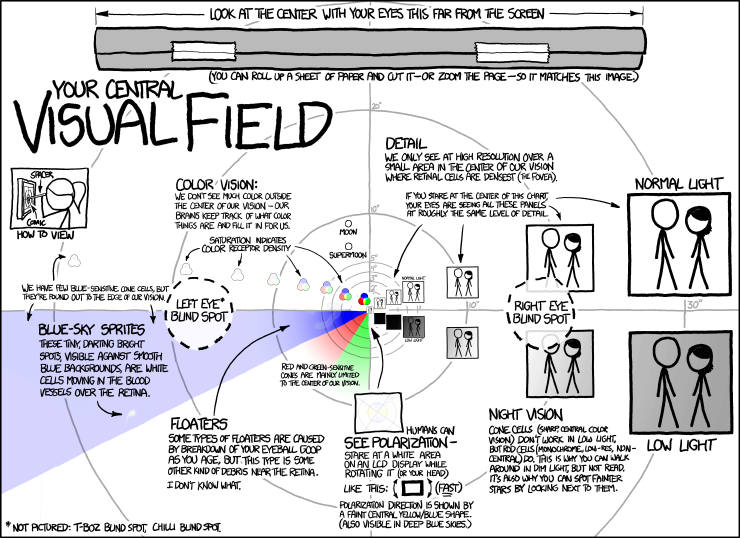
Also as always, credit for the piece goes to Randall Munroe.
Battleships are cool. Pointless in the 21st century, but they’re still cool. And now the USS Iowa is open as a museum in Los Angeles. Around the opening of the museum earlier this month, the LA Times put together a few graphics that were collected in one infographic piece that illustrated some of those parts of the ship open to the public. But what’s cooler than the guns that fire shells as big as trees (wrong ship in the song, but the point stands).

Credit for the piece goes to Tom Reinken, Raoul Ranoa, and Anthony Pesce.
Last week Mitt Romney’s campaign released a series of infographic adverts. They were Venn Diagrams with messages attacking President Obama by highlighting what the Romney campaign called gaps between what the president has said he would do and what he has in fact done.

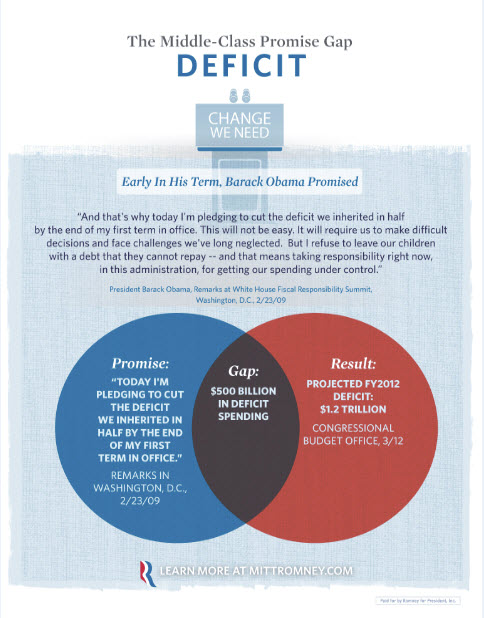

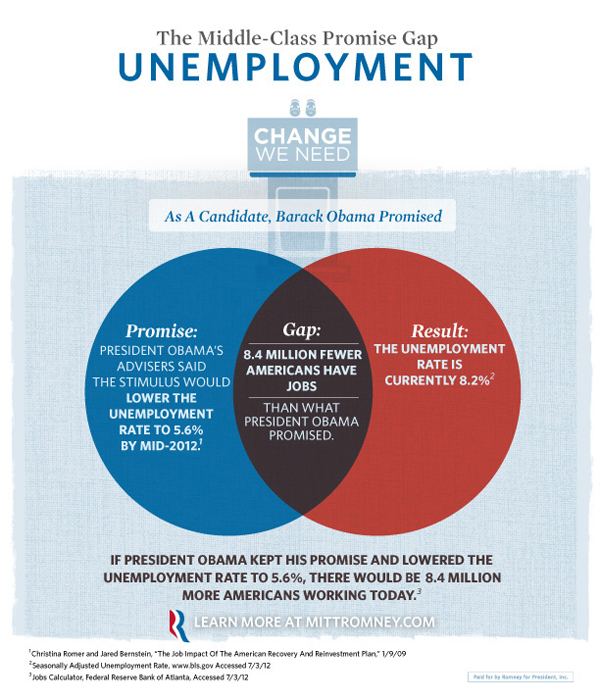
The problem with these is that they are all wrong. Do not misunderstand me, the Romney campaign certainly has valid points in these statements. And to use an infographic to communicate their points is a valid approach. But whoever designed these adverts clearly did not know how a Venn Diagram works.
Here is a brief refresher course for those interested.
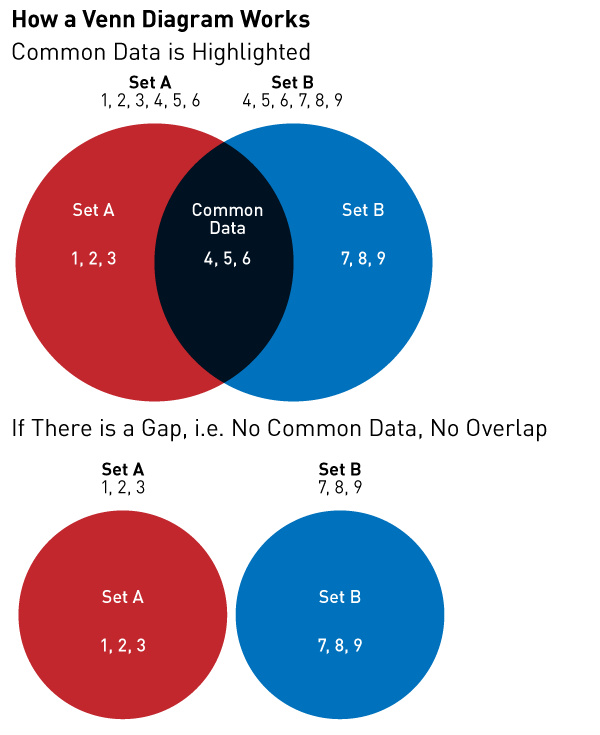
Unfortunately, the Romney campaign’s message is being lost in a failed medium. It’s like watching a clown give a doctoral thesis in rocket science. He sure might be making a good point. But it’s a clown. People laugh at clowns. People won’t take the clown seriously. The Romney campaign is making good points, but that message is being lost because the campaign cannot master one of the simplest types of charts.
Credit for the originals go to the Romney campaign. The bit on How Venn Diagrams Work is mine.
CERN may—or may not—have discovered a particle that may—or may not—be the Higgs Boson that would probably fill in a lot of the holes in our understanding of how the world may work at a sub-atomic level. That is a lot of ‘may’s.
Understanding just what a Higgs Boson does is not quite so easy. In really simplified language, it explains why things have mass. And when you put things of mass on a planet that has gravity, like Earth, why things have weight. Back in the early 1990s, the British minister for science offered a prize for the best explanation to be given in layman’s terms. The following image, via the BBC, is one part of that example. We all probably need to know it just a little more today.

So my prediction of the health care law being thrown out did not come to pass. But what will pass is the space probe Voyager 1 out of the solar system in the very near future. (Don’t worry unlike Voyager, I will return—albeit to the original subject matter next week.) So from the National Post we have an infographic that details just what is Voyager 1. (And no, it is not V’ger, that was the fictional Voyager 6.)
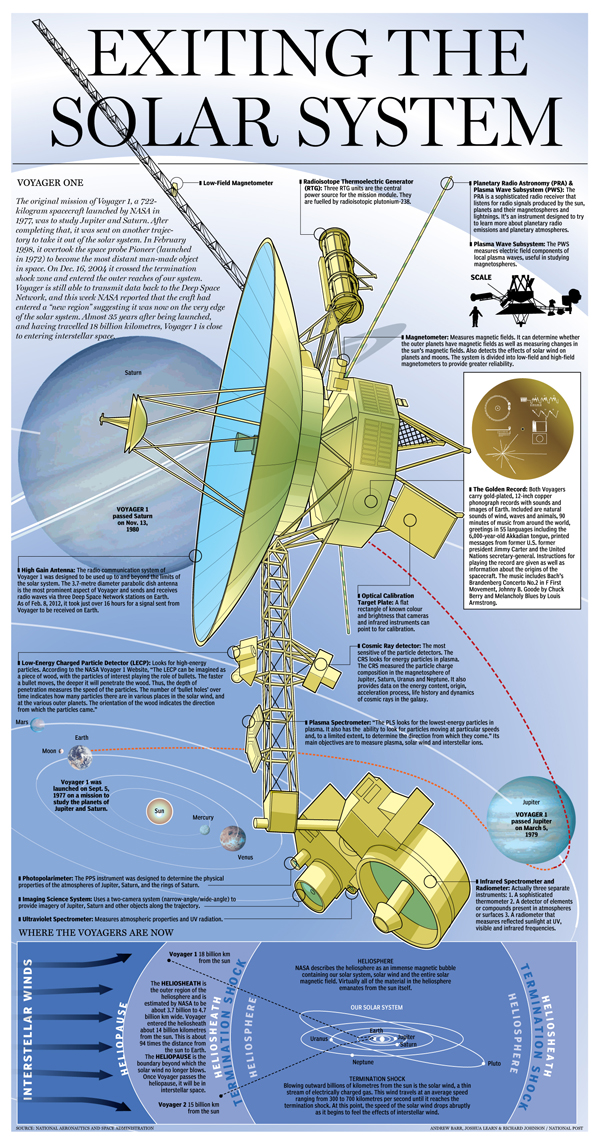
Credit for the piece goes to Joshua Rapp Learn, Andrew Barr, and Richard Johnson.
From the Sydney Morning Herald, we have a link to an interactive infographic published by the Cancer Council of Australia, a non-profit that seeks to reduce the impact of cancer upon Australia. It is not the most graphical by way of charts, but offers the user “playful” interactions with statistics to better inform him or her about the causes and impacts of cancer. The format is also interesting in that it mimics the fad in infographics of the long, vertical scroll page. But here it is done to much better and ostensibly more useful effect. Useful in the sense of trying to help people.
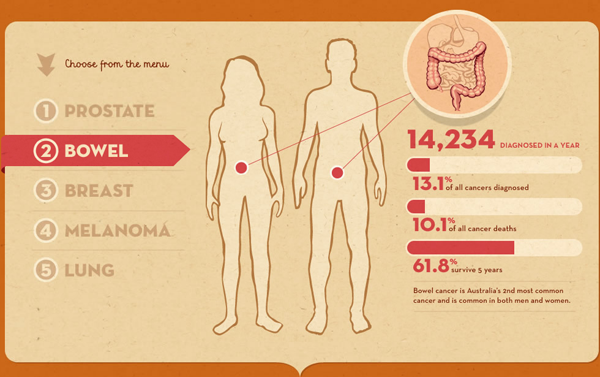
This is certainly not the largest, nor the most glamorous infographic. But to drivers in Los Angeles, probably a very useful one. It is a diagram of forthcoming changes to a series of on- and off-ramps to Interstate 405 and Wilshire Boulevard.

Simple things like having a dangerous red for the soon-to-be-closed ramps set against the calmer, desaturated colours of the safer, separated ramps of the future highlight the important area of the shared lanes. I probably would have called those areas out with something more than a black, many-pointed star, but it does still work.
Credit for the piece goes to Tia Lai and Anthony Pesce.